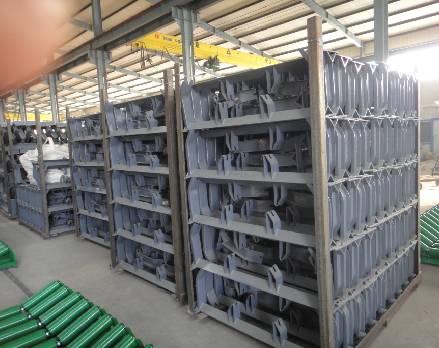 Afrikaans
Afrikaans  Albanian
Albanian  Amharic
Amharic  Arabic
Arabic  Armenian
Armenian  Azerbaijani
Azerbaijani  Basque
Basque  Belarusian
Belarusian  Bengali
Bengali  Bosnian
Bosnian  Bulgarian
Bulgarian  Catalan
Catalan  Cebuano
Cebuano  Corsican
Corsican  Croatian
Croatian  Czech
Czech  Danish
Danish  Dutch
Dutch  English
English  Esperanto
Esperanto  Estonian
Estonian  Finnish
Finnish  French
French  Frisian
Frisian  Galician
Galician  Georgian
Georgian  German
German  Greek
Greek  Gujarati
Gujarati  Haitian Creole
Haitian Creole  hausa
hausa  hawaiian
hawaiian  Hebrew
Hebrew  Hindi
Hindi  Miao
Miao  Hungarian
Hungarian  Icelandic
Icelandic  igbo
igbo  Indonesian
Indonesian  irish
irish  Italian
Italian  Japanese
Japanese  Javanese
Javanese  Kannada
Kannada  kazakh
kazakh  Khmer
Khmer  Rwandese
Rwandese  Korean
Korean  Kurdish
Kurdish  Kyrgyz
Kyrgyz  Lao
Lao  Latin
Latin  Latvian
Latvian  Lithuanian
Lithuanian  Luxembourgish
Luxembourgish  Macedonian
Macedonian  Malgashi
Malgashi  Malay
Malay  Malayalam
Malayalam  Maltese
Maltese  Maori
Maori  Marathi
Marathi  Mongolian
Mongolian  Myanmar
Myanmar  Nepali
Nepali  Norwegian
Norwegian  Norwegian
Norwegian  Occitan
Occitan  Pashto
Pashto  Persian
Persian  Polish
Polish  Portuguese
Portuguese  Punjabi
Punjabi  Romanian
Romanian  Russian
Russian  Samoan
Samoan  Scottish Gaelic
Scottish Gaelic  Serbian
Serbian  Sesotho
Sesotho  Shona
Shona  Sindhi
Sindhi  Sinhala
Sinhala  Slovak
Slovak  Slovenian
Slovenian  Somali
Somali  Spanish
Spanish  Sundanese
Sundanese  Swahili
Swahili  Swedish
Swedish  Tagalog
Tagalog  Tajik
Tajik  Tamil
Tamil  Tatar
Tatar  Telugu
Telugu  Thai
Thai  Turkish
Turkish  Turkmen
Turkmen  Ukrainian
Ukrainian  Urdu
Urdu  Uighur
Uighur  Uzbek
Uzbek  Vietnamese
Vietnamese  Welsh
Welsh  Bantu
Bantu  Yiddish
Yiddish  Yoruba
Yoruba  Zulu
Zulu accessory drive belt tensioner
Understanding Accessory Drive Belt Tensioners
The accessory drive belt tensioner is a critical component in modern automotive engines. It ensures that the belt that drives various engine accessories maintains the proper tension, allowing them to function efficiently. This belt typically powers components such as the alternator, power steering pump, water pump, and air conditioning compressor. A properly functioning tensioner is essential for the overall performance, reliability, and longevity of the engine.
What is an Accessory Drive Belt?
Before discussing the tensioner, it's essential to understand what the accessory drive belt is. This serpentine belt is usually made of durable rubber and is designed to withstand the fluctuating temperatures and conditions within the engine compartment. The belt wraps around multiple pulleys attached to engine accessories. As the engine runs, the crankshaft spins the belt, which in turn drives these accessories.
The Role of the Tensioner
The primary function of the accessory drive belt tensioner is to maintain the correct amount of tension on the belt. When the belt is too loose, it can slip off the pulleys, leading to a loss of power to the accessories. Conversely, if the tension is too tight, it can cause excessive wear on the belt and the components being driven, potentially leading to premature failure.
The tensioner itself consists of a spring-loaded arm that can adjust to changes in belt length as it wears or as environmental conditions change. Some modern vehicles have a hydraulic tensioner that uses oil pressure to adjust the tension, providing consistent performance even under varying engine loads.
Symptoms of a Failing Tensioner
A failing accessory drive belt tensioner can lead to various problems
. Here are some common symptoms to watch foraccessory drive belt tensioner

1. Belt Slipping If you notice a squeaking or chirping noise, it could indicate that the belt is slipping due to improper tension. This can lead to overheating of the engine and underperformance of accessories.
2. Visible Wear Inspect the tensioner for any signs of wear or damage. Cracks in the tensioner or excessive play in the pulley can indicate that it needs to be replaced.
3. Belt Misalignment If the belt appears to be misaligned on the pulleys, this may be a sign that the tensioner is not functioning properly, which could lead to further damage to the belt and components.
4. Engine Warning Lights In some vehicles, a malfunction in the accessory drive system may trigger a warning light on the dashboard, indicating a need for immediate attention.
Maintenance and Replacement
Like any mechanical component, the accessory drive belt tensioner requires regular maintenance. It’s advisable to inspect it during routine service intervals and replace it if any signs of wear or malfunction are detected. Typically, tensioners should be replaced whenever the accessory drive belt is changed, as they work in tandem and a new belt on a worn tensioner can lead to premature belt failure.
When the time comes for replacement, it is essential to use a high-quality tensioner that meets the manufacturer’s specifications. Installing a subpar product can compromise the performance of the entire accessory drive system.
Conclusion
In summary, the accessory drive belt tensioner is a small but vital part of an engine's accessory drive system. By ensuring that the accessory drive belt remains at the proper tension, it plays a crucial role in the smooth operation of essential engine components. Regular inspection and maintenance of the tensioner can significantly enhance the reliability and efficiency of a vehicle, ultimately contributing to its overall performance and longevity. Understanding its function and addressing any issues promptly can save drivers from costly repairs and ensure that their vehicles remain in optimal condition.
-
Wing Pulley Conveyor for Conveyor Belt MaintenanceNewsJun.16,2025
-
Self Cleaning Spiral Idler for Conveyor DesignNewsJun.16,2025
-
Pulley Lagging for Conveyor Belt AlignmentNewsJun.16,2025
-
Impact Idlers Used in Belt Conveyor for PerformanceNewsJun.16,2025
-
Ceramic Lagging Conveyor Pulley for Conveyor Belt SystemsNewsJun.16,2025
-
Belt Conveyor Idler for Heavy-Duty ApplicationsNewsJun.16,2025





























